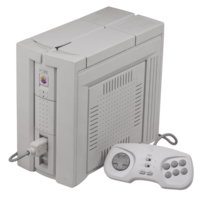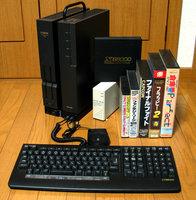I think his objective is to have a simplified console version - not a bad idea on the surface.
The natural response if to assume that removing the screen and keymat and battery and simplifying the case design should make it cheaper, but still be able to use the 'stock' OS and play all of the games and use all of the applications. It isn't that simple, and the expensive parts are still present.
Just my broad estimations - not actual, but I think I should be in the right ballpark for production costs (not development). I'm using very rounded numbers that are easier to play with for this example. Screen ~20EUR, Keymat ~10EUR, Battery ~20EUR. So, it -might- save around 50 EUR in raw parts. However, creating a new case would be something in the order of 15,000 EUR. If the 'stand alone' Pyra console sold 1/3 as many units (~300) as are pre-ordered for the Pyra (~900), it would need to cost the roughly the same as the 'fully loaded' Pyra.
(15,000 / 300) = 50 Euro additional per unit costs aggregated over 300 units in order to make a units with 50 Euros fewer parts.
Net savings for consumer in this example = 0 Euro.



